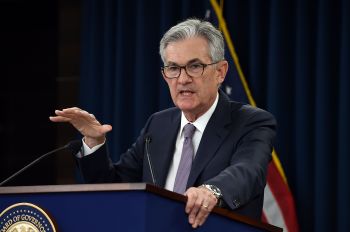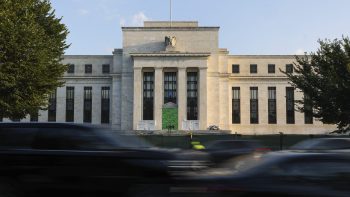Here’s how the Fed will raise interest rates
We know how the Federal Reserve used to raise interest rates. It raised the rate at which banks can borrow from each other — the federal funds rate — limited the supply of funds available for banks to borrow, and presto, rate hike.
But that’s no longer the case.
During the recession, the Federal Reserve tried to stimulate the economy by purchasing large quantities — more than $4 trillion worth — of securities including treasuries and mortgage backed securities in a move called ‘quantitative easing.’ When the Fed purchased these assets, it would transfer money into banks’ reserve accounts at the central bank. The result is that the reserve accounts of banks are vastly larger than they need for their own purposes or are required by law.
“These banks are completely awash in trillions of excess reserves,” said Krista Schwarz, assistant professor of finance at the Wharton school and veteran of the New York Federal Reserve Bank. “So if the federal funds rate were allowed to set itself according to supply and demand in market it would drop to zero right now because nobody needs to borrow anything.”
No reasonable amount of intervention in the open market can influence supply and demand of reserves, and therefore interest rates, for cash borrowing between banks and financial institutions.
So what to do now that the Fed’s tool is broken?
“Now it’s a different game it all works differently,” said Joe Gagnon, a senior fellow at the Peterson Institute for International Economics. “This time what they’re going to do is they’re going to just pay banks more interest on the reserves they own.”
Since 2008, the Federal Reserve has had the authority to pay interest on the reserves that banks keep, and it currently only pays 0.25%. By increasing the level of interest on reserves, the Fed will try to set the safest, lowest interest rate in the entire economy. Why lend money elsewhere when you can keep it at the Fed?
“Hopefully banks won’t lend for less than that,” said Gagnon, “and that will raise all other interest rates.”
That tool is not expected to be enough, however. That’s because there are other institutions which are capable of loaning cash into the system — insurance companies, pension companies, Fannie and Freddie — that do not have the option of holding reserve accounts at the Fed and earning interest.
To reach them, the Fed has created an investment opportunity for some of these institutions. It’s known as a reverse repo. Under such an arrangement, institutions purchase securities from the Fed, with an agreement that the Fed will purchase them back for a higher price later. In everything but name, it’s a loan to the Fed for a given rate of interest.
Ideally, this will result in these institutions refusing to lend elsewhere for less than the rate offered by the Fed. Additionally, the effective interest rate offered under a reverse repo agreement with these non-bank institutions would be lower than what is offered to the banks. That is by design, to encourage banks to borrow from these institutions at one rate, invest that money with the Fed at a higher rate, and keep the difference.
The goal is to dissuade any lending at lower interest rates than those offered by the Fed.
How, you might ask, can the Fed afford to pay out all this money?
“They have assets,” said Gagnon. “Those are the treasury bonds, the mortgage bonds that they bought” during the period of quantitative easing. The more than $4 trillion in securities that the Fed purchased are earning interest at a rate significantly higher than the Fed is contemplating paying out to banks and other institutions.
“So they have a long way to go before they pay out more interest than they’re earning,” said Gagnon.
Still, “there are big unknowns,” said Gagnon. How much reverse repo will the Fed have to conduct to keep rates in the economy at the level it wants? Will banks pass on the earnings they get from the Fed to their depositors? Will that filter into treasury markets, influencing the yield on treasuries?
In short, just how well will these tools work?
There’s a lot happening in the world. Through it all, Marketplace is here for you.
You rely on Marketplace to break down the world’s events and tell you how it affects you in a fact-based, approachable way. We rely on your financial support to keep making that possible.
Your donation today powers the independent journalism that you rely on. For just $5/month, you can help sustain Marketplace so we can keep reporting on the things that matter to you.


















